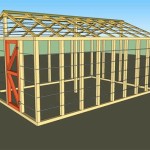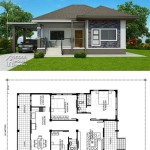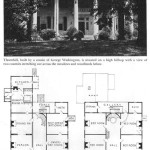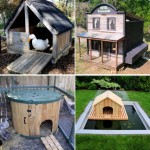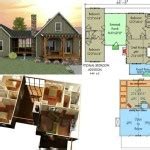Carriage House Floor Plans: Maximize Space and Styles
Carriage houses, originally built to house horse-drawn carriages and their related equipment, have evolved into versatile structures offering a variety of uses from guest accommodations and home offices to rental units and studios. Their compact footprint, often coupled with a second-story design, presents unique opportunities for maximizing space and incorporating diverse architectural styles.
One of the key benefits of carriage house floor plans is their inherent efficiency. Designers often focus on creating open, multifunctional layouts that minimize wasted space. The ground floor, traditionally reserved for carriage storage, can be adapted into a garage, workshop, or even a self-contained apartment. Upstairs, living areas, bedrooms, and bathrooms are strategically arranged to optimize flow and functionality.
Several factors contribute to the efficient use of space in carriage house designs. Vaulted ceilings create an illusion of spaciousness while allowing for the incorporation of lofts or storage areas within the roof structure. Built-in shelving and cabinetry maximize vertical space, providing ample storage without encroaching on floor area. Large windows and strategically placed skylights introduce natural light, further enhancing the perception of openness and airiness.
Carriage house floor plans offer remarkable flexibility in terms of architectural styles. They can seamlessly complement the main house, echoing its architectural features and materials, or they can stand as a distinct structure with its own unique character. Popular styles include traditional, craftsman, modern, and farmhouse, each offering distinct aesthetic appeal.
Traditional carriage house plans often feature gabled roofs, dormers, and decorative trim. These designs evoke a classic, timeless charm, blending seamlessly with older homes and established neighborhoods. Materials such as brick, wood siding, and cedar shingles are commonly used to create an authentic, historic look.
Craftsman-style carriage houses emphasize natural materials, handcrafted details, and exposed beams. Low-pitched roofs, wide eaves, and tapered columns are characteristic features. The focus on functionality and simplicity makes craftsman designs a popular choice for those seeking a comfortable and understated aesthetic.
Modern carriage house plans embrace clean lines, geometric shapes, and minimalist details. Flat roofs, large windows, and metal accents are common features. These designs often incorporate sustainable building materials and energy-efficient technologies, appealing to those seeking a contemporary and environmentally conscious approach.
Farmhouse-style carriage houses exude rustic charm with their board-and-batten siding, metal roofs, and sliding barn doors. Open floor plans, exposed beams, and farmhouse sinks contribute to the welcoming, informal atmosphere. This style often incorporates reclaimed wood and other salvaged materials, adding to the character and authenticity of the design.
Beyond aesthetics, carriage house floor plans offer practical advantages in terms of functionality. They can provide additional living space for extended family, guests, or live-in caregivers. They can also serve as a home office, studio, or workshop, providing a dedicated space separate from the main house for work or creative pursuits.
For homeowners seeking rental income, carriage houses can be designed as self-contained apartments or guest suites. This offers a valuable source of supplemental income and can increase the overall property value. The separate entrance and private living space offer both the homeowner and the renter a sense of privacy and independence.
The design process for a carriage house typically begins with a careful assessment of the site and its surroundings. Factors such as lot size, setbacks, and zoning regulations will influence the size and placement of the structure. The homeowner's needs and budget will also play a crucial role in determining the design and features of the carriage house.
Working with an experienced architect or designer is essential for maximizing the potential of a carriage house floor plan. They can help navigate the complexities of the design process, ensuring that the final structure meets all building codes and regulations while fulfilling the homeowner's vision. They can also offer valuable insights into material selection, energy efficiency, and sustainable building practices.
Careful consideration of the site, the intended use, and the desired aesthetic are crucial elements in designing a successful carriage house. By maximizing space and incorporating appropriate stylistic elements, carriage house plans can provide versatile and functional living spaces that complement any property.

Small House Plans Under 1000 Sqft Craft

Adu Floor Plans 700 Sq Ft Long 2 Bedroom 1 Bath Design

Adu Over Garage 1br 1ba One Bedroom Carriage House
:max_bytes(150000):strip_icc()/SL-2049-F1-3204a31b3ccb426bade3f2380a29b2bd.jpg?strip=all)
Why Bellewood Cottage Is The Perfect House Plan For Empty Nesters

Tiny Cottage House Plans Guide To Build Yours Craft

Garage Apartment Plans Architectural Designs

Adu Floor Plans 700 Sq Ft Long 2 Bedroom 1 Bath Design

Studio Apartment Floor Plans

House Plans The Best And Barndominium Designs 2025

L Shaped House Plans With Side Garages Blog Eplans Com
Related Posts

